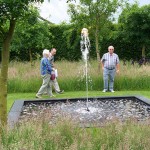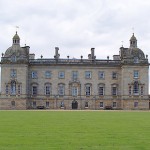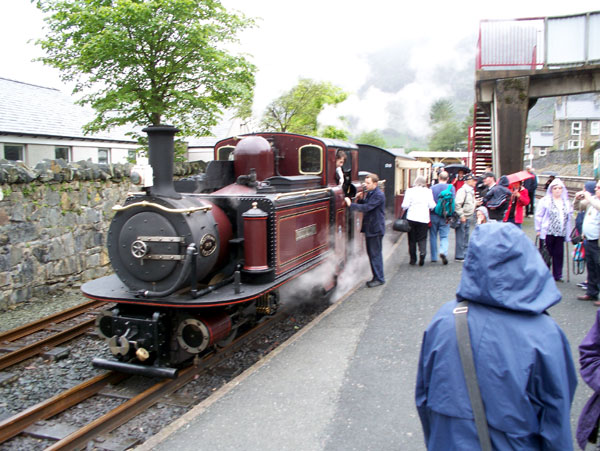 The railway runs from the coastal town of Porthmadog to the hill town of Ffestiniog, a climb of 700 ft. The route includes a causeway, a short tunnel and a complete spiral, passing forests, lakes and a dam. The narrow-gauge railway was established in the 1830’s for carrying slate downhill to the port, and in the 1860’s was converted to steam traction. It also carried passengers. The slate industry declined and the line closed in 1946. Volunteers and enthusiasts re-established the railway from 1955. By 1982, the track, including the Great Deviation to avoid a new hydro-electric dam, reached a new narrow gauge/standard gauge interchange station at Blainau Ffestiniog.
The railway runs from the coastal town of Porthmadog to the hill town of Ffestiniog, a climb of 700 ft. The route includes a causeway, a short tunnel and a complete spiral, passing forests, lakes and a dam. The narrow-gauge railway was established in the 1830’s for carrying slate downhill to the port, and in the 1860’s was converted to steam traction. It also carried passengers. The slate industry declined and the line closed in 1946. Volunteers and enthusiasts re-established the railway from 1955. By 1982, the track, including the Great Deviation to avoid a new hydro-electric dam, reached a new narrow gauge/standard gauge interchange station at Blainau Ffestiniog.
Today it is a popular tourist attraction, connecting with Conwy Valley Network Rail trains at Ffestiniog and with West Highland Railway narrow-gauge trains at Porthmadog.
The views from the train are often spectacular, and at the upper end of the route parts of the original trackbed can be seen. There are useful-looking stops en route.
Railway buffs can admire the unique double-ended steam engines and the period rolling stock.
Practical Notes: Parking in front of the Porthmadog station is extremely limited, but there is pay parking nearby, e.g behind the nearby supermarket. There is parking at Blainau Ffestiniog station. Hard-up families may note that there is a Porthmadog – Ffestiniog double-decker bus service, which presumably provides a scenic route at much lower cost. The Conwy Valley Network Rail route is said to be very scenic. You could make a railway-themed day out by starting from Porthmadog, taking the connecting Network Rail to Betws-y-Coed, visiting the miniature railway museum beside the station, etc, and then returning.
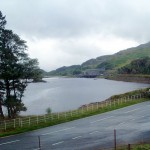
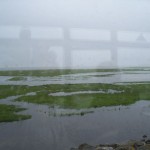
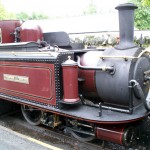
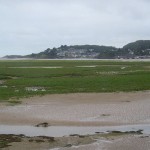
Dolbadarn Castle, Gwynedd, Wales
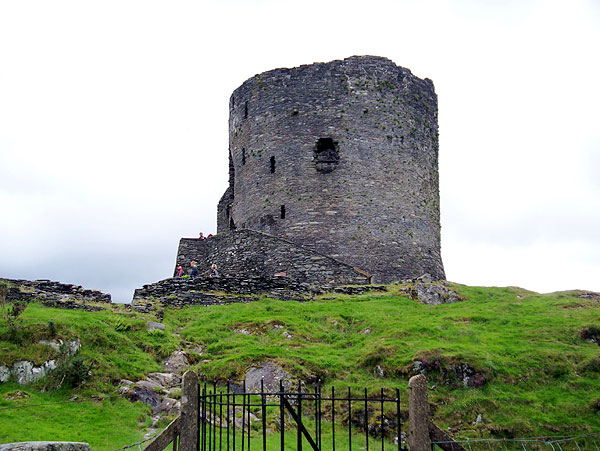
Dolbadarn Castle was built by the Welsh prince Llywelyn the Great during the early 13th century. Originally there were three towers, a hall and an East building within the walls on the hilltop, but only the round tower survives to any height. It was taken by the English in 1283. They removed timbers from it to build Caernarfon castle, but parts of the castle continued to be used as a manor house into the 14th century.
The keep is still an impressive structure, and the internal spiral staircase can still be accessed to climb from first to second floor levels, though the timber floors no longer exist. There are fine views from the castle mound.
Once you know where the castle is (it is visible from the narrow-gauge railway, near the LLanberis stop), it is easily reached on foot from LLanberis. There is no admission charge.
Llanberis lake area, Gwynedd, Wales
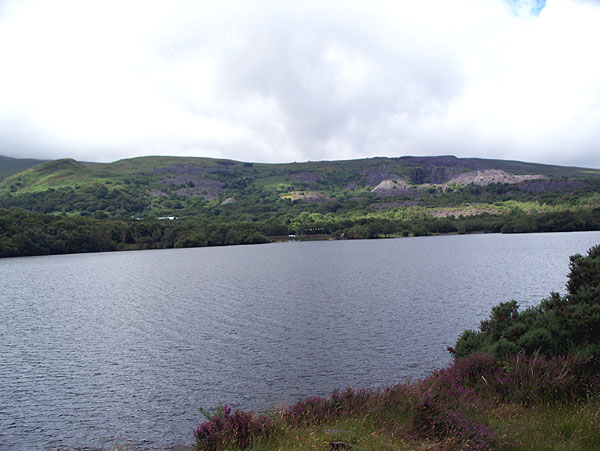 Llanberis lake area has a number of attractions, including the lake, the lakeside railway, the Snowdon mountain railway, Electric Mountain power station tour, Dolbadarn castle, and the slate museum. It is difficult to find anywhere to park around here where you won’t be charged for the privelege of supporting local tourism. If you park in the car park next to the principal narrow-gauge rail station and Slate Museum, you will also be within walking distance of the Dolbadarn Castle, the Visitor Centre for the Electric Mountain power station tours, and the terminus for the Snowdon railway.
Llanberis lake area has a number of attractions, including the lake, the lakeside railway, the Snowdon mountain railway, Electric Mountain power station tour, Dolbadarn castle, and the slate museum. It is difficult to find anywhere to park around here where you won’t be charged for the privelege of supporting local tourism. If you park in the car park next to the principal narrow-gauge rail station and Slate Museum, you will also be within walking distance of the Dolbadarn Castle, the Visitor Centre for the Electric Mountain power station tours, and the terminus for the Snowdon railway.
If you are interested in civil engineering the power station visit is well worth while. They don’t like you to take cameras or mobile phones on the tour, and after the introductory film show the second stop is the lockers where you are directed to lock away the ‘banned’ items.
The narrow-gauge lakeside railway is more a mobile viewing platform than a means of transport, hence it does not stop at “all stations” as you might expect. (See their website). The published timetable shows trains starting from the principal station (Gilfach Ddu) by the Slate Museum, not the end of the line at Llanberis.
All the above are worth trying, depending on your interests and budget. Note that the Snowdon Mountain Railway is expensive, and if the weather at the summit is forecast clear, book ahead, as you probably will not be able to just turn up and go! The Slate Museum is free, but if you are trying to cram a lot into the day, note that while it closes at 5.00pm, sections of the site are being shut down from around 4.30 pm onwards.
The power station visit is recommended for those with an interest in Real Engineering – see the miles of access tunnels, the vast underground halls, the house-sized inlet valve, and the turbine festooned with hydraulic actuators and pipework. The plant can generate enough power to supply the whole of Wales.
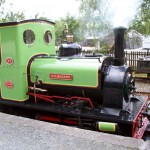
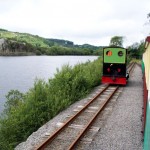
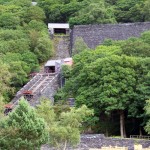
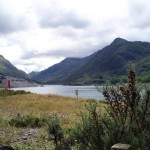
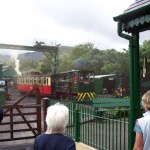
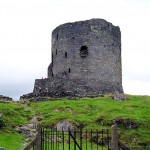
Criccieth Castle, Gwynedd
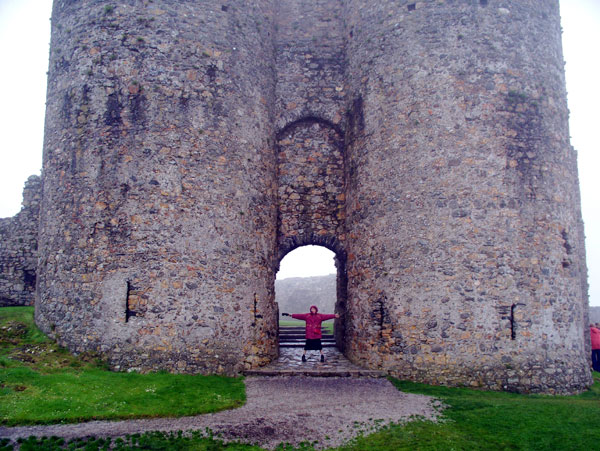
CADW
Criccieth Castle is a native Welsh castle whose remains dominate the coastal town of Criccieth. The castle was apparently commenced at the beginning of the 13th century. Later, it was occupied for a time by the English, who are thought to have remodelled it. It was destroyed by the Welsh during Owain Glyndwr’s rebellion in the 14th century.
The remains are dominated by the gatehouse, which looks like an English design but was almost certainly built by the Welsh. There are superb views from the castle mound as far as Harlech, Snowdonia, etc. Bring your binoculars.
The castle is worth a visit if you are in the area. Given its ruined state, looking at the castle will not detain you very long.
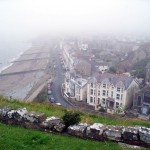
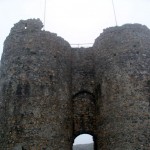
Portmeirion, Gwynedd
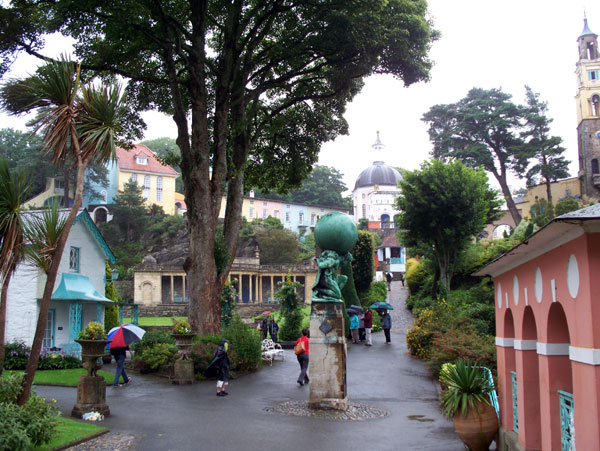 Portmeirion is one of the premier visitor attractions in Wales. It is situated just outside Porthmadog, overlooking the sea. Best known as the set of Patrick McGoohan’s “The Prisoner” TV series, it is also a mid-priced hotel complex. Visitors can enter the Village area daily on payment of a fee.
Portmeirion is one of the premier visitor attractions in Wales. It is situated just outside Porthmadog, overlooking the sea. Best known as the set of Patrick McGoohan’s “The Prisoner” TV series, it is also a mid-priced hotel complex. Visitors can enter the Village area daily on payment of a fee.
Portmeirion was originally developed by architect Clough Williams-Ellis to demonstrate that commercial development to re-vitalise an estate could be carried out without ugly over-development. The quaint Italianate ‘Village’ occupies a quite small part of the estate. The buildings and terraces incorporate bits of architectural salvage, obtained cheaply by Williams-Ellis in the days when any old and surplus building could be summarily knocked down. Many of his structures are just one room deep or are painted with ‘tromp d’oeil’ effects.
There are the usual facilities of a large visitor attraction. There is a ‘land train’ to encourage visitors to get out of the village and explore the miles of paths and the grounds with their lakes and sub-tropical plants.
The ‘Village’ buildings form part of the hotel room and self-catering accommodation. There is also the shore hotel and Castell Deudraeth hotel, which you may glimpse as you drive in.
Portmeirion has its own website.
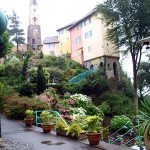
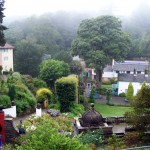
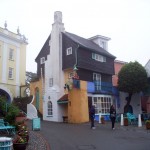
Harlech Castle, Gwynedd
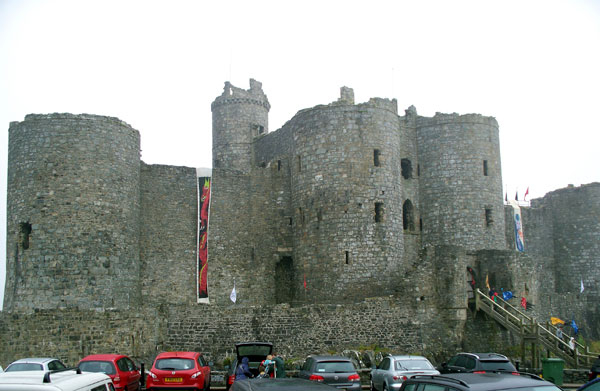 CADW
CADW
Harlech Castle was built by Edward I in 1283-1289 to subdue the Welsh. It was designed by the brilliant castle builder Master James of St George, and is one of a ring of great castles built to encircle North Wales. Today, the stone shell of the castle is still substantially complete, and it dominates the flat coastal land far below. The castle was intended to be resupplied by sea, and a defensible stairway leading down to water level still exists.
The large gatehouse is impressive whether viewed from the inside or the outside. The castle was originally surrounded by a lower outer wall which formed a narrow outer ward, but this outer wall is now much reduced in height.
Inside the single inner ward are the footings of various buildings, and the grand stair giving access to the lodgings in the gatehouse. Stairs in the eastern towers give access to the walkway on top of the main walls.
An impressive and substantially complete castle, well worth a visit.
If you are travelling to Harlech from the Menai area of North Wales, note that the A487 is a much faster road than the alternatives, and the “Toll” flagged up by your satnav is a single-track and toll-bridge shortcut across the Traeth Bach estuary east of Porthmadog, which costs 50p.
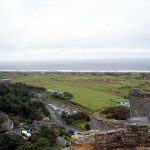
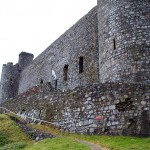
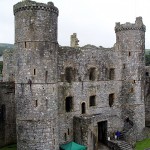
Chirk Castle, Wrexham
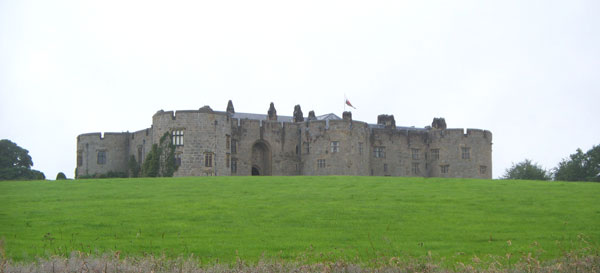 National Trust
National Trust
The castle was completed in 1310 by Edward I to help subdue the Welsh, and is still inhabited. Though much altered and restored, the outline of the mediaeval castle remains, with a luxurious mansion constructed inside it. The towers must originally have been higher, as in the other Edwardian Welsh castles. The accommodation is constructed around a central courtyard, originally the inner bailey.
The North range, dating from the early 17th century, contains fine rooms mostly in a neo-classical style, but with a hall styled by Pugin.
The South range, dating from 1529, was built by officials working for Henry VIII. It contains a chapel and servants’ hall.
The East range was much damaged in a Civil War siege, then rebuilt. Its current form dates from 1846, when an open colonnade was enclosed.
The West range of c.1300 survives largely unaltered and has some rooms in the thickness of the wall.
Outside are some fine formal gardens, and the laundry rooms.
On the approach you pass the fine gates by Davies. The car park is quite a long way further on.
Chirk is well worth a visit.
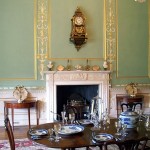
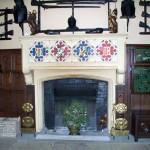

Lilleshall Abbey, Shropshire
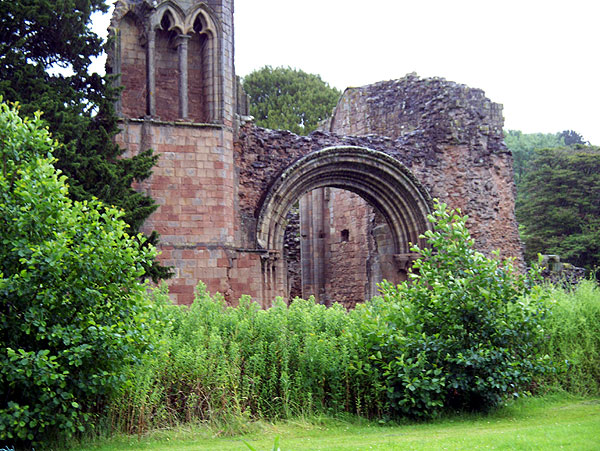 English Heritage
English Heritage
An Augustinian abbey, dissolved by Henry VIII. It was later adapted as a Civil War stronghold. Substantial ruins of the Abbey church and other buildings remain, in a deeply rural setting. As one enters the nave, an inconspicuous spiral stairway on the left leads up to a viewpoint high up on the wall. There are some elaborately carved doorways.
It’s worth a visit if you are passing near Telford.
St Peters Church, Milton Keynes
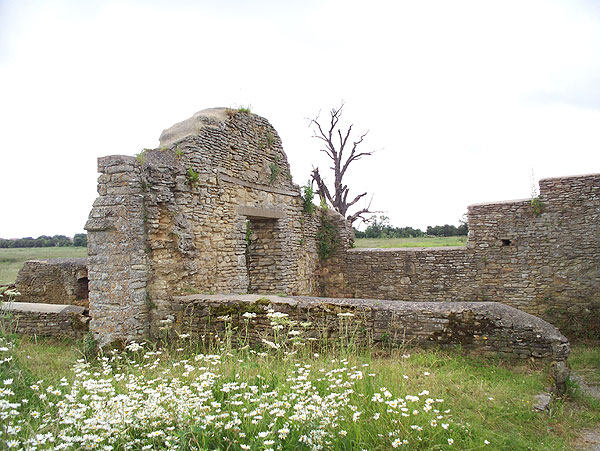 St Peters Church is situated in the new Stanton Low Country Park, near Great Linford, Milton Keynes. The church, dating from c. 1150, served the vanished village of Stanton Low, and was in occasional use in the early 20th century, but the roof collapsed in 1956 and the building is now a sad ruin.
St Peters Church is situated in the new Stanton Low Country Park, near Great Linford, Milton Keynes. The church, dating from c. 1150, served the vanished village of Stanton Low, and was in occasional use in the early 20th century, but the roof collapsed in 1956 and the building is now a sad ruin.
There is a preservation society – see St Peters group
The site can be awkward for the non-local to find. There is a roadway leading from the main road that goes past it: find the Black Horse pub, and follow the roadway immediately to the east of the canal. This roadway is single-track and there is nowhere to park or pass, so it is not advised to drive down it unless you really have to. A short distance further east, another roadway leads to the Hanson Centre, which has parking and a shorter footpath to the church. The church itself is surrounded by a fence and entry is discouraged.
Houghton Hall, Norfolk
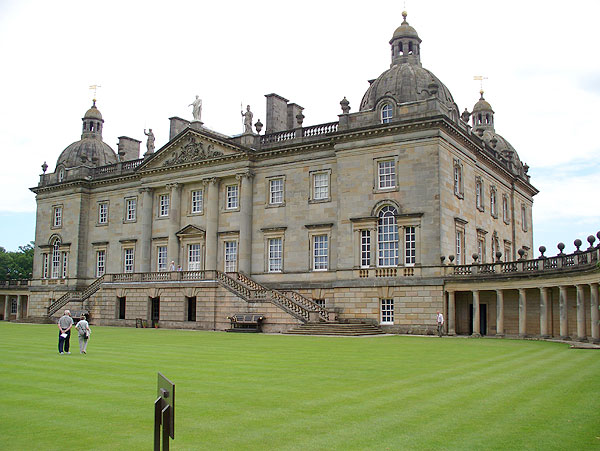 Private
Private
Houghton Hall is one of the grand houses of Norfolk, and was built for Sir Robert Walpole, successful 18th century politician, and known as the 1st British Prime Minister. It seems that no expense was spared in fitting out the house, and it appears in lists of the 10 grandest houses in England. The decor and contents are largely original, though the original paintings were sold off by one of Walpole’s descendants.
The state rooms are the only rooms on display, and it doesn’t take long to go round (about 1 1/4 hours), leaving the visitor to eke out the rest of his/her half-day visit by looking at the walled gardens, the modern art installations in the grounds, the model soldiers and other exhibits in the stable block, or going around the state rooms again. The state rooms are very ornate and impressive (sorry, no interior photos here).
Modern visitors enter by the tradesmen’s entrance at the back. The original grand entrance stairs at front and back were removed by an eccentric owner, the one now on the west side being a modern replacement. The award-winning walled garden is well worth a visit.
If you are wondering what is or was in the wings, the one nearer the stables was originally the kitchens and is now estate offices, and the other one was an orangery and art gallery and now is mostly used for storage.
Practical notes: As usual, ignore your post-code sat-nav while in the vicinity of the estate. Mine told me to turn right when I could see the entrance gates dead ahead. On leaving the car park later, it took me in a circle around the grounds. The real exit route is not as clearly marked as it might be…
Houghton Revisited
I visited the house again in Oct 2013 for the once in a lifetime exhibition. As well as the fine pictures from the Hermitage, I was able to see the Library (part of the exhibition but not part of the 2012 tour) the Church, and the Palladian Water Tower. The Water Tower is accessible, but is a long hike along an avenue of trees.
